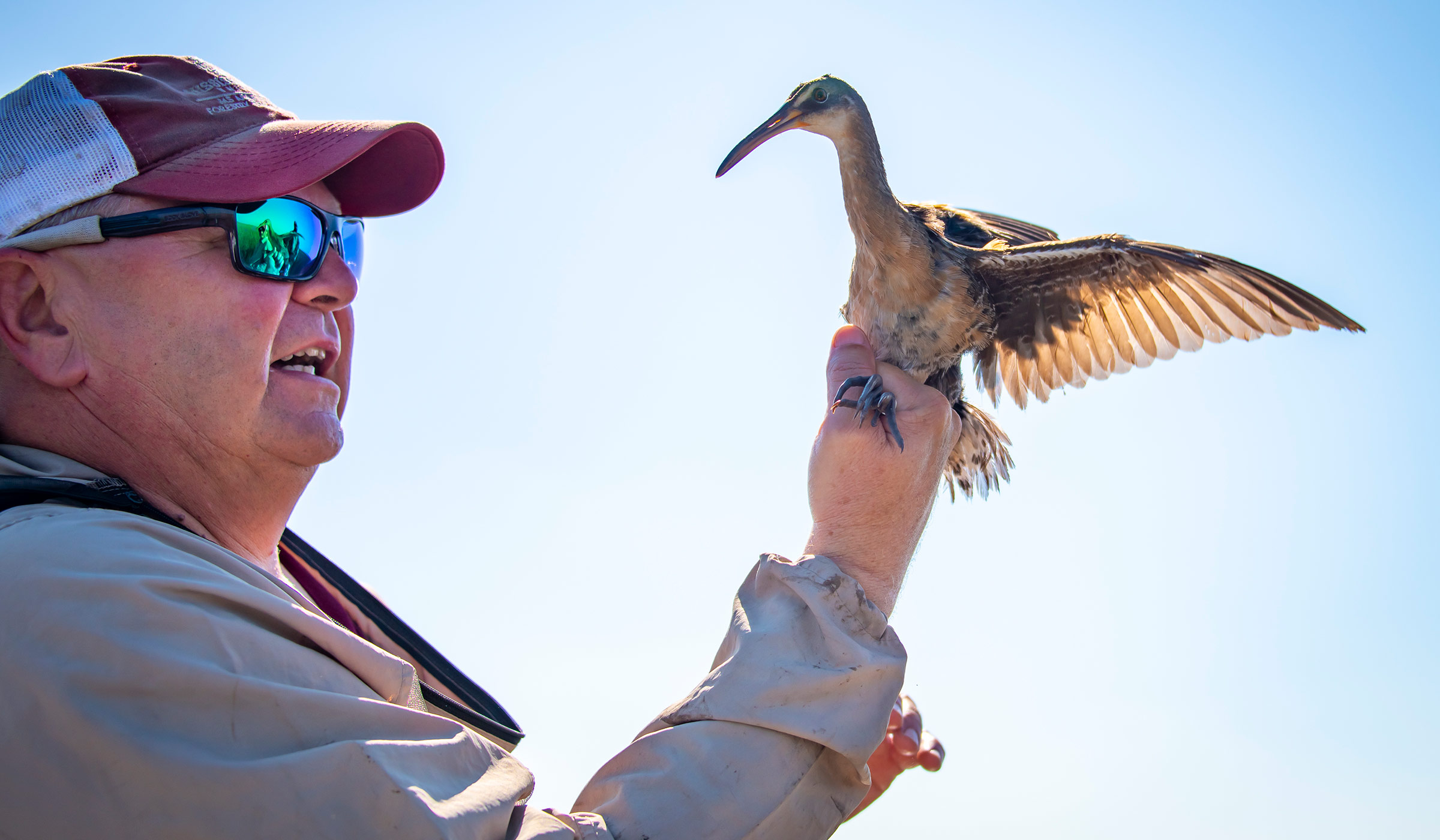Mark Woodrey

At age 12, Mark Woodrey banded a Swainson’s Thrush and was immediately captivated by birds.
“The bird migrates from Canada to Central and South America. I looked into the bird’s eye and wondered how it made such a journey,” he remembered.
The Trenton, Ohio native would band that same bird for two consecutive years with Bob Thobaben, a local naturalist who took a young Woodrey under his wing.
Woodrey went on to earn bachelor’s and master’s degrees from Ohio State University before moving south to the University of Southern Mississippi, where he earned his doctoral degree, studying the migratory patterns of coastal birds. He fell in love with coastal Mississippi’s birdlife and ecology and never left.
The Mississippi Agricultural and Forestry Experiment Station scientist has spent 20 years researching coastal bird ecology and conservation at the MSU Coastal Research and Extension Center in Biloxi. He studies marsh birds, including the clapper rail pictured, and conservation decision making. He was pivotal in the recent creation of the Gulf of Mexico Avian Monitoring Network (GOMAMN), a group of avian conservation partners along the northern Gulf of Mexico.
The 2021 recipient of the U.S. Fish and Wildlife Service Regional Director’s Honor Award is utilizing a nearly $4 million grant from the National Oceanic and Atmospheric Administration’s RESTORE Science Program. The project aims to better understand how prescribed fire impacts Mottled Ducks and Yellow and Black Rail populations along the Gulf of Mexico so resource managers can better manage habitat for them.
In addition to Thobaben, Woodrey also was mentored by Terri Baker, his 7th-grade science teacher. Interestingly, he introduced Thobaben and Baker and served as their best man when the couple later married. Woodrey also was mentored by graduate students from nearby Miami University in Oxford, Ohio, and spent time with his grandfather as the two walked through the woods watching birds.
Woodrey had a chance to thank two of his mentors in 2016, at the North American Ornithological Conference, celebrating the centennial of the Migratory Bird Treaty Act.
“I was giving a presentation and Bob and Terri walked in the room. In front of several hundred people, I thanked them for fostering my passion for science and birds as the two people apart from my family who had the biggest impact on me,” he said.
Woodrey, who now spends time banding birds with his 17-year-old son, said he learned early to pay it forward. The assistant research professor in MSU’s Department of Wildlife, Fisheries and Aquaculture currently mentors two master’s students, a research associate, technician and program manager. He also regularly employs undergraduate research scholars and said mentoring students is what he loves most about his job.
“I think back to all the time I spent with folks like Bob and Terri, probably talking their ears off as a 12-year-old kid, and all they said was pay it forward and I take that to heart,” he said.